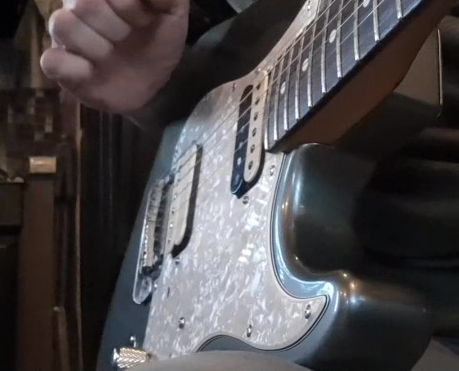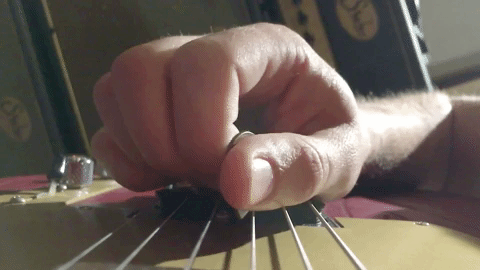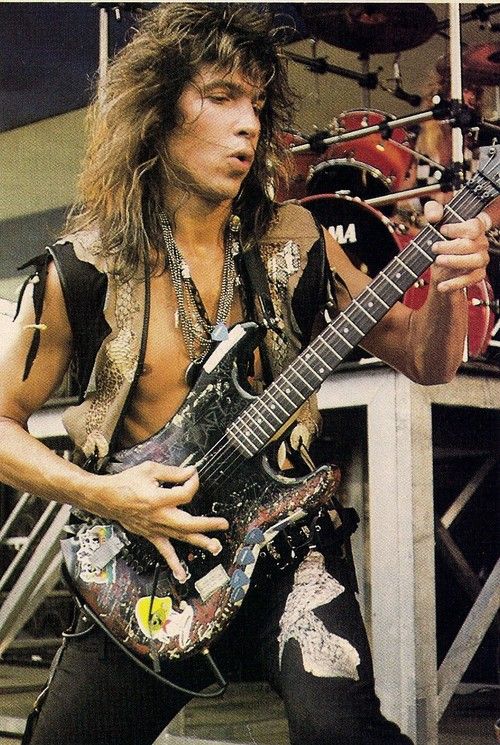Do you guys use a closed fist or open right hand?
Pretty closed I think!
I played for over 20 years with my pinkie and ring fingers planted. Then in 2012 I made a conscious effort to play with a floating lose fist. It took a few months to get comfortable with it, but it helped me play better in the end. It turns out those fingers were just getting in the way!
But really, do whatever’s comfortable for you. There’s so many amazing players with wildly different techniques that there’s no “right” or correct" way. Experiment and see what feels best!
I basically cannot play at all if I close my fingers, all control of pick angle, depth, attack just goes out the window.
Mostly closed with the pinky anchored. Having an open hand kinda like Troy or Teemu Mäntysaari also feels comfortable for me, so I sometimes switch to that too 
I can do both (also with anchored/not anchored variations), and I find different hand setups more comfortable for different things!
Open because I can’t understand the point of introducing extra tension into the picking hand by curling my fingers in. If I do that and continue playing they just end up going back to the open position.
I have always played open. Light contact with picking hand 3rd and 4th fingers on the body (or the treble strings, if I’ve picking the lower ‘wound’ strings). It helps me control pick depth with the former, string dampening with the latter.
Lately though, I’ve been working on elbow mechanic after a technique critique by Troy recommended I go all in with elbow. I’ve noticed Rustly Cooley has a closed hand. That’s obviously not the secret sauce, but I figure it couldn’t hurt to experiment. It initially feels weird to me and like @guitarenthusiast said, I find when I do this, if I look down at my hand after a minute or 2, I see it has opened itself back up 
Oh yeah, then there’s Shawn Lane  I guess he never looked like he was making a fist or anything, but I’d consider his hand more closed than open.
I guess he never looked like he was making a fist or anything, but I’d consider his hand more closed than open.
I think you have to factor in what neutral position someone’s fingers go to at rest. Could be because of the excessive amount of grip training that I do, but my fingers at rest already point back to my wrist.
Same here. When my hand is completely relaxed, the fingers are curved in a lose fist. For me, it seems to take more active muscles to play with an open hand than with a closed.
Those of you who play with an open hand and are playing a Strat - do you find that the volume knob is a bother?
I “deleted” it. Went to a 3-way switch with each humbucker having it’s own volume; no tone knob.

I got Haar to make me one with only 2 knobs
Loosely closed for me, so the fingers can drop down and hybrid pick at any time. I don’t anchor either, as I started on acoustic guitar, and anchoring dampened the top from vibrating. Now I need those ‘anchoring fingers’ for the hybrid picking.
I play finger style and hybrid pick as well, so it varies depending on what I’m playing.
I have been an open player, with my pinky planted on the pick guard as a fulcrum. I’ve been trying to move to a closed fist, planting only on the bridge with the side of my hand. I’ve found that my previous style, I never bumped into the volume or the whammy bar, but with a closed fist, when I’m playing on the b or high e, I run into both with the side of my hand and I can’t really do it.
Couple things. One, try not to think of this as a super black and white choice between “open” and “fist”. Most players who use a curled finger orientation don’t really clamp down into a true fist, it’s more of a curl, and there a degrees of it, even in the same player’s technique. For example, here are two versions of Andy Wood:

Second, what you choose to do here is going to be influenced by your choice of arm position and picking motion. If you’re using a wrist motion approach like Andy’s, you are likely to end up with some version of his form because the wrist is bent upward into extension. It’s slight, but it’s there. This is why the fingers don’t hit the strings or controls.
By contrast look at how different the form looks for forearm-wrist motion:
The wrist is no longer bent upwards into extension, but slightly flexed - i.e. like you’re holding a baby. The arm is more supinated, meaning the pinky side of the hand is turned more so it rests on the bridge. If you tried this arm and hand orientation with Andy’s form, the fingers would hit the strings or controls. Leaving them out like this takes them out of the way. They now rest lightly against the body. The motion no longer works by pivoting at the wrist joint, because it really can’t — at least not the way Andy’s does. So the motion is a combination of the wrist moving and the arm turning a little.
So it’s just not just a choice of what to do with your fingers, it’s what to do with your entire technique. All the parts need to fit together and some of these elements are not as optional as you might think.
I would like to ask this: Doesn’t the orientation of the wrist on the axis of its flexion/extension automatically affect how open or closed the hand at rest will be?
Flexing the wrist will in turn produce additional tension on the extensors of the fingers and therefore “open” the hand and straighten the fingers if you don’t actively work against it. Extending the wrist does the opposite.
So, in turn an extended wrist like in andy woods setup would automatically produce more “curled fingers”, while you would see less curled fingers in a more flexed wrist setup like steve morse, yngwie, etc.
I guess my question is, doesn’t this kind of sort it itself out, depending on the wrist setup you choose?
(With individual variations, depending on ones flexibility etc.)
Not that I’m aware of. I mean, you can test this yourself. Just flex-extend your hand in the air. My fingers don’t experience any tension or change their orientation when I do that.
Also, understand that Andy’s motion still uses the extensors and flexors. His motion is not pure deviation, it moves along a diagonal somewhere in between deviation and flextension. And even a pure deviation motion actually uses some of the flexors/extensors. They’re not totally slack.
So basically I think whether the fingers are open or closed is simply whether you want them to be.



